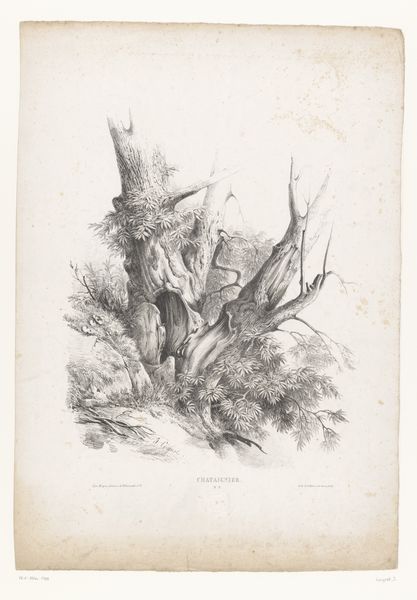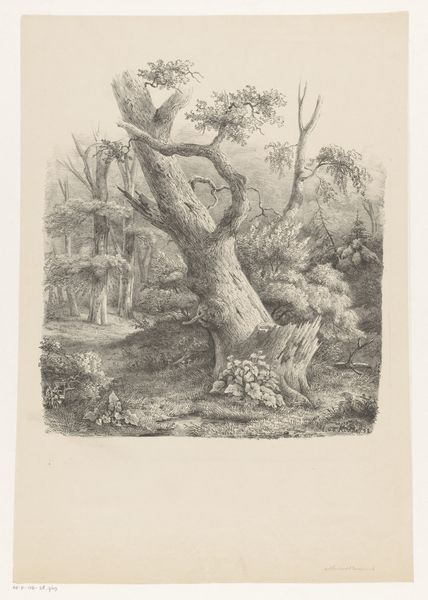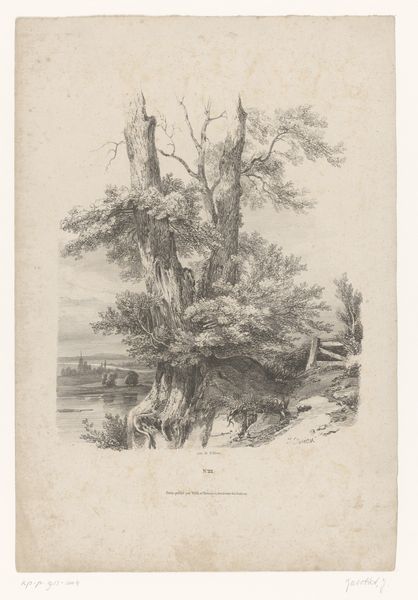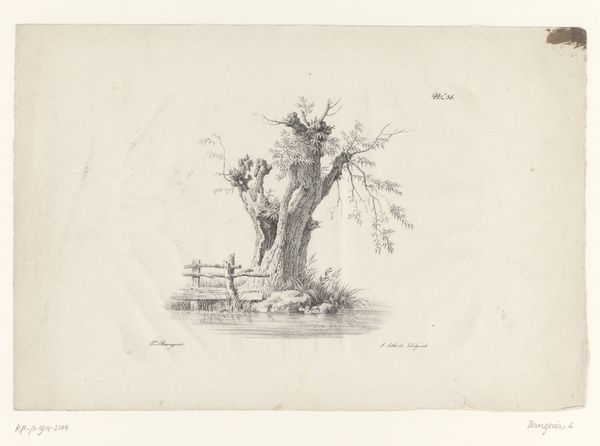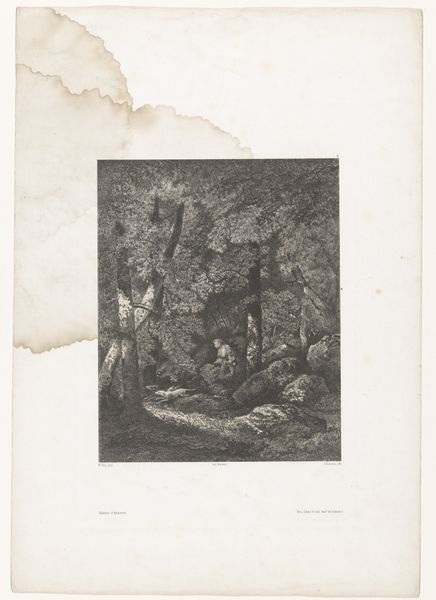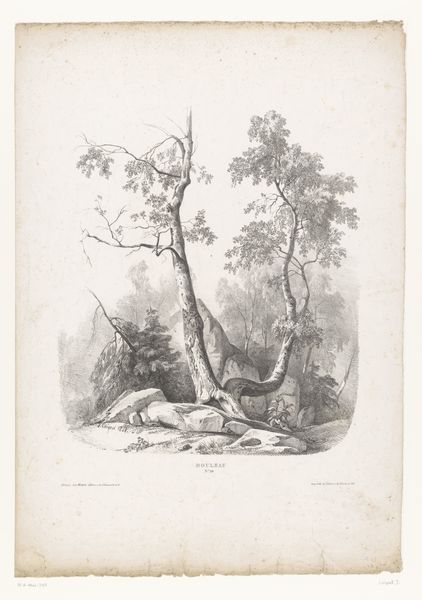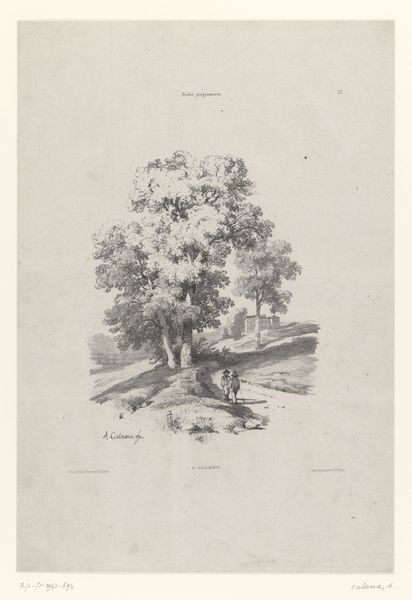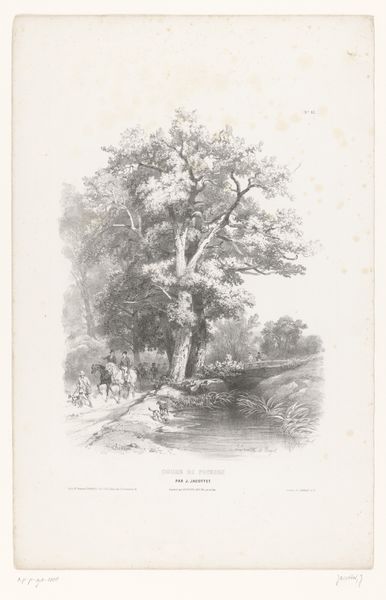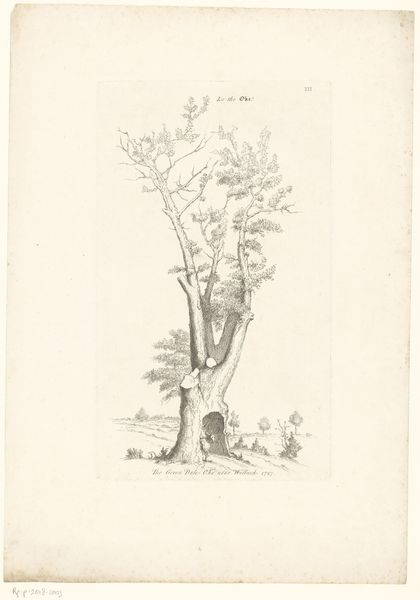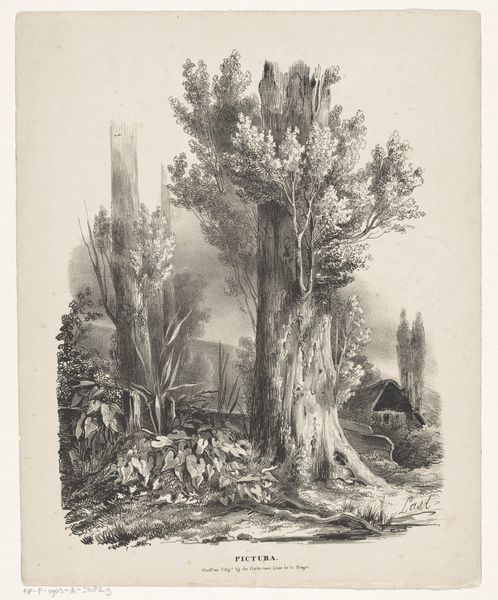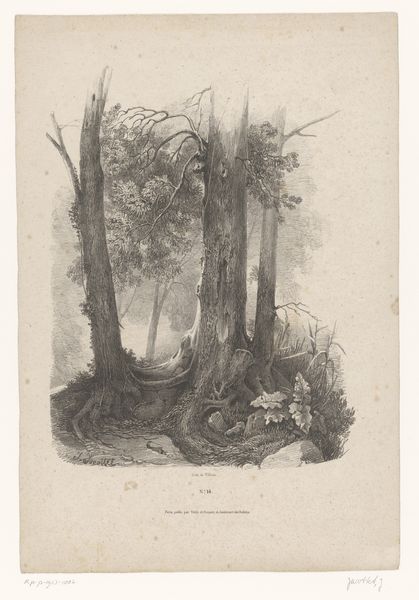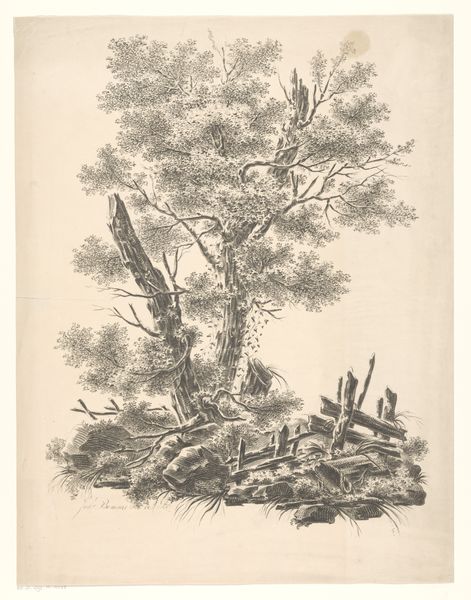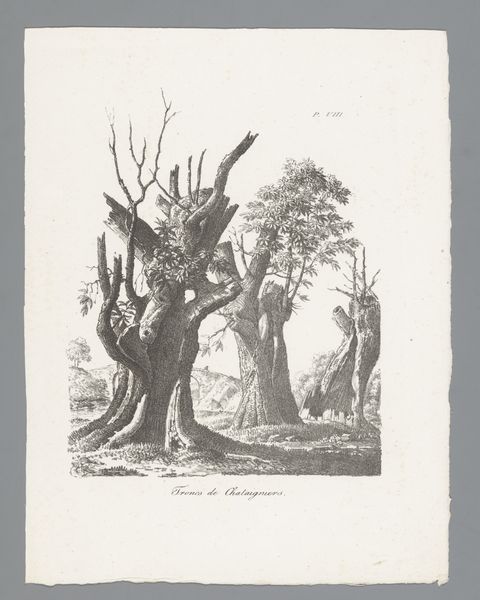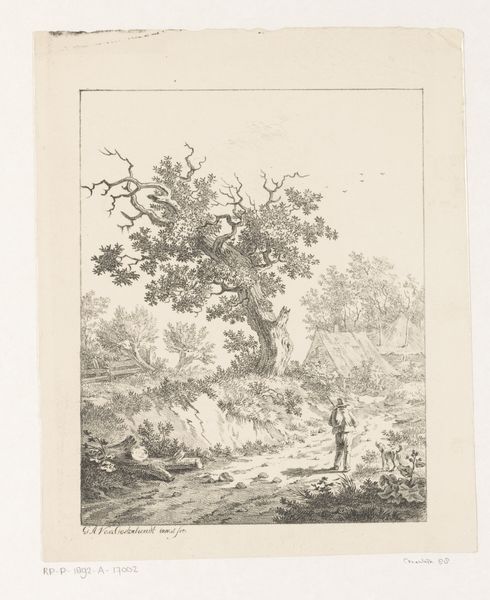
drawing, paper, pencil
#
drawing
#
landscape
#
paper
#
form
#
romanticism
#
pencil
#
line
#
genre-painting
#
realism
Dimensions: height 597 mm, width 426 mm
Copyright: Rijks Museum: Open Domain
Editor: So, this is Jules Coignet's "Beech Tree in a Rocky Landscape," from 1828, rendered in pencil on paper. There's something about the tree’s gnarled trunk and broken branches that evokes a feeling of resilience in the face of harsh natural forces. How do you interpret this work? Curator: Considering its context, this drawing speaks volumes about the Romantic era's changing relationship with nature. Artists moved from depicting nature as idyllic backdrop, to engaging with its powerful, sometimes destructive, force. This wasn't simply about aesthetic beauty anymore. We see that struggle for survival rendered in the aged form of this specific tree. Editor: That's fascinating. So, this shift, would you say it reflects a broader cultural change? Curator: Absolutely. The rise of industrialization brought about a sense of alienation from nature. This, coupled with revolutionary politics across Europe, fueled the Romantic vision. Artists used imagery, like Coignet's tree, to remind people of the raw, untamed power that persisted beyond human control, almost as a form of social critique. Look how he details every imperfection of that Beech tree. Editor: It's interesting how the realism blends with that idealized, powerful mood. What do you make of the genre-painting aspect indicated in the tags? Curator: A landscape such as this can reflect social commentary through carefully framed scenes. The form that the artist provides, like the trunk of a decaying tree, has narrative quality as well as the emotional quality that you picked up on initially. In doing so, he elevated the landscape genre to communicate complex ideas. Editor: This makes me rethink the role of landscape art and its subtle ways of influencing perception and sparking critical dialogues. Curator: Exactly. Art becomes a tool, a visual language to question the status quo and explore the deeper currents of society. We started with nature but we revealed society. Editor: This was a very informative journey. Thank you for shedding light on the art’s power within historical context.
Comments
No comments
Be the first to comment and join the conversation on the ultimate creative platform.
